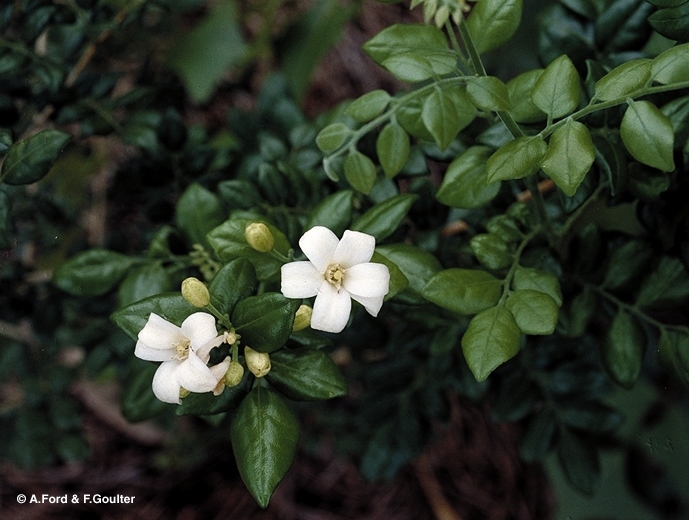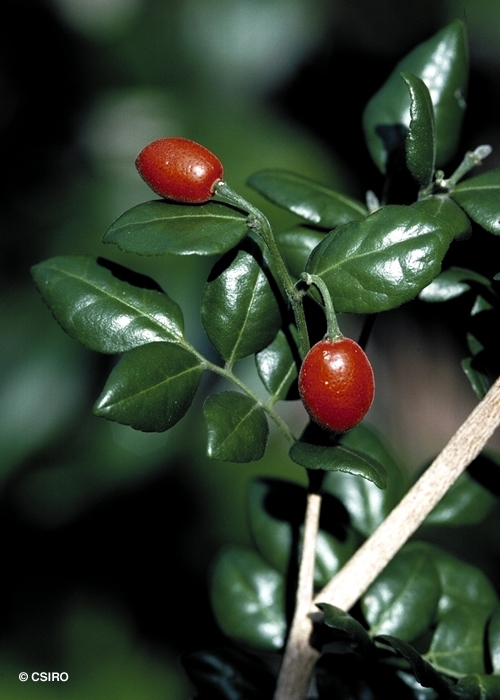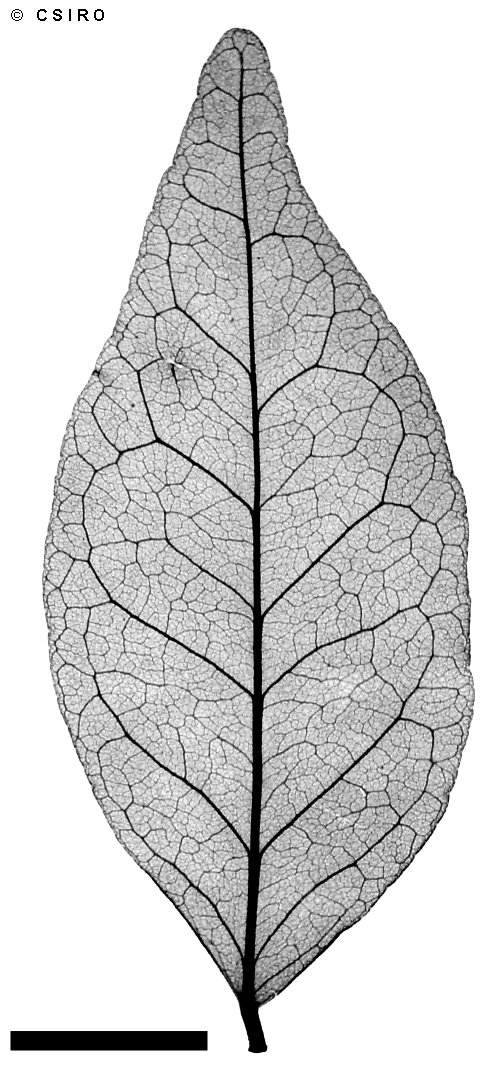Australian Tropical Rainforest Plants - Online edition
Murraya paniculata (L.) Jack





Jack, W. (1820) Malay Misc. 1: 31.
Orange Jasmine; Orange Jessamine; Box, China; China Box; Cosmetic Barktree; Jasmine, Orange; Orange, Mock; Mock Orange
Usually grows into a small, poorly formed tree not exceeding 30 cm dbh but also flowers and fruits as a shrub. Blaze very finely layered.
Fruits ellipsoid, about 7-12 x 7-8 mm. Seeds about 6-7 x 4 mm, densely hairy on the outer surface. Cotyledons cream.
Cotyledons ovate or elliptic, thick and fleshy without any obvious venation. Oil dots numerous. First pair of leaves simple, margins crenate, oil dots numerous. At the tenth leaf stage: leaflet blades +/- orbicular, oil dots numerous and closely spaced, midrib slightly raised on the upper surface. Stem bark pale and corky. Seed germination time 68 to 95 days.
Occurs in WA, NT, CYP, NEQ, CEQ and southwards to north-eastern New South Wales. Altitudinal range from sea level to 200 m. Grows in monsoon forest, beach forest, low closed forest and similar vegetation types. Also occurs in SE Asia, Malesia, New Caledonia and Fiji.
Murraya paniculata as described here includes a number of variable forms which are sometimes identified as separate species by different botanists. Native forms often with small leaves are sometimes referred to as Murraya ovatifoliolata but are included here under M. paniculata. Exotic plants in cultivation and sometimes escaping are also included in Murraya paniculata. Further research is required to resolve the uncertainty around how these forms are classified and whether they warrant recognition as separate species.
A small tree that has potential for cultivation in gardens in drier areas. Flowers are greenish yellow.
This species may have medicinal properties.





